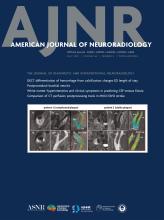This article requires a subscription to view the full text. If you have a subscription you may use the login form below to view the article. Access to this article can also be purchased.
Graphical Abstract
Abstract
BACKGROUND AND PURPOSE: The automatic recognition of intracraial aneurysms by means of machine-learning algorithms represents a new frontier for diagnostic and therapeutic goals. Yet, the current algorithms focus solely on the aneurysms and not on the recognition of their parent vessels. The purpose of the present study is the development of a new machine-learning algorithm for fully automatic identification of cerebral arteries and intracranial aneurysms (IAs) based on a manually segmented MRA-TOF data set.
MATERIALS AND METHODS: In this retrospective single-center study, 62 MRA-TOF scans of a total of 73 untreated, unruptured IAs were manually color-labeled in 21 classes. A nnUNet architecture was trained on MRA-TOF images. The performance of the automatic segmentation was compared with the manual segmentation by using the Dice Similarity Coefficient (DSC), Centerline Dice (ClDice), and 95th percentile Hausdorff Distance (HD95). Sensitivity was computed for aneurysm detection.
RESULTS: Across all 21 classes, the median DSC was 0.86 [95% CI: 0.81–0.89], the median ClDice was 0.91 [0.85, 0.94], and the median HD95 was 2.9 [1.0, 14.9] mm. Sensitivity of the model for aneurysm detection was 0.8. For this class specifically, a median DSC of 0.88 [0.13, 0.92], median ClDice of 0.89 [0.06, 1.0], and median HD95 of 1.8 [0.58, 81] mm was achieved. The volume of the labeled anatomic structure was the most relevant determinant of accuracy in this model. Median time to predict was 130.6 [60.9, 284.1] seconds.
CONCLUSIONS: The nnUNet MRA-TOF–based algorithm provided a fast and adequate automatic extraction of unruptured IAs, their parent vessels, and the most relevant cerebral arteries. Future steps involve the expansion of the training set with the inclusion of more MRA-TOF studies with and without IAs and its incorporation in 3D imaging viewers and treatment prediction.
ABBREVIATIONS:
- ACA
- anterior cerebral artery
- AComm
- anterior communicating artery
- BA
- basilar artery
- ClDice
- Centerline Dice
- DL
- deep learning
- DSC
- Dice Similarity Coefficient
- FN
- false-negative
- FP
- false-positive
- HD95
- 95th percentile Hausdorff Distance
- IA
- intracranial aneurysm
- ML
- machine learning
- PCA
- posterior cerebral artery
- PComm
- posterior communicating artery
- TP
- true-positive
- © 2025 by American Journal of Neuroradiology













